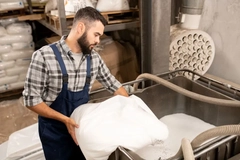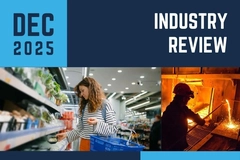Global push for biodegradable packaging faces regulatory gaps and market challenges

The push for biodegradable packaging solutions is gaining momentum. While regulatory support in the EU has accelerated the transition toward biodegradables and away from conventional materials, other markets still rely on consumer-driven demand, according to experts at Sulapac and Releaf Paper.
Challenges in biodegradable packaging commercialization, financing, and infrastructure persist, but innovative materials and strong advocacy efforts help to overcome these hurdles.
Dr. Heidi Peltola, chief product officer at Sulapac, tells Packaging Insights: “Some companies have already made the shift from oil-based plastic into bio-based, biodegradable materials in a selected product line or in a specific product category, which is a great start. The next step is to copy this approach across the organization.”
“There are also great initiatives around reuse and refill solutions, and Sulapac is working, for example, with Horeca industry customers to enable a shift from single-use to reusable solutions without conventional plastic.”
Finding what is most sustainable
When it comes to sustainability regulations and consumer preferences across markets, Alexander Sobolenko, CEO of Releaf Paper, highlights the contrast in various regions.
“The EU market has strict regulations on materials and packaging. Single-use plastic is already banned here, and by 2030, all packaging must be recyclable. This is perhaps the most important factor that stimulates the development of sustainable materials in the EU.”
 Dr. Heidi Peltola, chief product officer at Sulapac.“The markets in America and Asia do not have such clear regulations — plastic is still widely used, and biodegradable packaging, although present, is driven solely by the growing environmental awareness of end users. However, in these markets, the percentage of consumers who not only want to see sustainable packaging in products but are also willing to pay for it is not very high.”
Dr. Heidi Peltola, chief product officer at Sulapac.“The markets in America and Asia do not have such clear regulations — plastic is still widely used, and biodegradable packaging, although present, is driven solely by the growing environmental awareness of end users. However, in these markets, the percentage of consumers who not only want to see sustainable packaging in products but are also willing to pay for it is not very high.”
Sulpac’s Peltola notices that many companies have set concrete, time-bound targets for reducing oil-based plastic in their packaging. However, consumers are currently faced with contradicting messages. “On one hand, there’s a lot of information available on the potential risks of microplastics and the toxic chemicals that can leak from plastic packaging.”
“On the other hand, we have been told that recycled PET is the highest level of sustainability that you can reach. While the truth is that it might be better than virgin plastic, it sure isn’t enough to save [us from] the global plastic crisis. One should bear in mind that the time to act is now.”
Overcoming operational barriers
Despite increasing interest in sustainable packaging, companies face multiple challenges in scaling biodegradable solutions. Sulapac highlights that the main challenge with bio-based biodegradable packaging is the lack of proper recycling infrastructures.
“It is being established as we speak, but the pace is too slow. Together with other players in the industry, we are trying to push decision-makers, brands, and the waste management ecosystem to move faster so that this material group can reach its full circular potential,” says Peltola.
The company emphasizes that polymer-to-polymer recycling for biopolymers can achieve a 95% yield, producing food-contact-quality materials.
Releaf Paper and Sulapac acknowledge the crucial role businesses play in driving the shift toward sustainable packaging. Alexander Sobolenko, CEO of Releaf Paper.
Alexander Sobolenko, CEO of Releaf Paper.
Releaf Paper’s Sobolenko says: “Although the market is actively interested in sustainable packaging made from alternative materials, it is in no hurry to switch to it. Companies that have already replaced plastic have five more years in Europe to fully switch to recycled packaging. Therefore, the transaction cycle with large companies can take 12–24 months.”
“Small and medium-sized businesses are more flexible and fast, but they cannot provide a sufficient critical mass of volumes. At the same time, other participants in the food chain, such as paper mills and converters, are often passive players and are in no hurry to participate in building a channel for promoting innovative solutions to end consumers. All this critically slows down the market launch of biodegradable packaging.”
Overcoming misconceptions
Misinformation around biodegradable materials is another hurdle the sector faces, according to Peltola.
“There are certain misconceptions related to bio-based and biodegradable materials, so educating different stakeholders is something that we must systematically engage in.”
“For example, Sulapac materials can be manufactured and processed with the same machinery as conventional plastic, which makes it an inherently scalable solution, as opposed to the belief that biodegradables are only fit for some small-scale ‘special’ projects.’ Some customers have also been surprised to see that Sulapac as a bio-based and biodegradable material can in certain aspects even outperform conventional plastic in terms of performance and processability.”
She says that some customers have struggled with the dilemma of whether to prioritize bio-based or recycled content.
 Releaf Paper has started exploring new possibilities using its expertise in green waste.“We have tackled this issue by offering our customers materials that are both bio-based and recycled. For example, Sulapac Flow 1.8 comes with over 50% recycled content. When brands see firsthand that sustainability, functionality, and quality can all go hand-in-hand, the transition away from oil-based plastic suddenly becomes a whole lot easier.”
Releaf Paper has started exploring new possibilities using its expertise in green waste.“We have tackled this issue by offering our customers materials that are both bio-based and recycled. For example, Sulapac Flow 1.8 comes with over 50% recycled content. When brands see firsthand that sustainability, functionality, and quality can all go hand-in-hand, the transition away from oil-based plastic suddenly becomes a whole lot easier.”
Sobolenko also notes that investment in biodegradable materials development requires substantial funding with long-term returns.
“To develop innovations of this level, you need investments that will not be returned quickly. They are not easy to obtain because producers of sustainable materials compete in the capital market with IT startups, which are less risky for investors and can deliver results faster. Right now, Releaf Paper is looking for an investor for €5 million (US$5.4 million) to continue its growth.”
Future plans
Looking ahead, Sulapac will continue maintaining aesthetic appeal and structural integrity in its materials.
“We have made great progress in making Sulapac’s sustainable solutions a competitive alternative to conventional plastic also in an economic sense. This is the result of years of intensive product development by a talented and experienced team of professionals and collaboration with our customers. We will continue our efforts in that matter,” Peltola remarks.
“Our materials have been optimized based on the most demanding testing protocols by leading cosmetic brands. It is important to note that each plastic type has unique properties, and hence, we offer a diverse portfolio of sustainable materials, each designed to replace specific plastics in certain types of applications.”Sulapac says the thermoforming industry needed a bio-based, biodegradable material that offered both consistent quality and easy processing.
The company is currently looking into strengthening its presence in the US thermoforming sector while continuing collaborations with European and international cosmetic brands.
“Our big vision for the near future is to help the cosmetic industry get rid of acrylonitrile butadiene styrene plastic and replace it with something sustainable, beautiful, and functional.”
Meanwhile, Releaf Paper plans to strengthen its production capacity by loading its newly opened paper mill in France with volumes, and launching a new paper model made from fallen leaves.
“After that, we plan to enter the markets of other EU countries and start construction of our second processing plant in Germany next year. And in five years, we plan to switch to a licensing model and provide industrial players from around the world with the opportunity to produce paper from leaves using our technology,” says Sobolenko.










